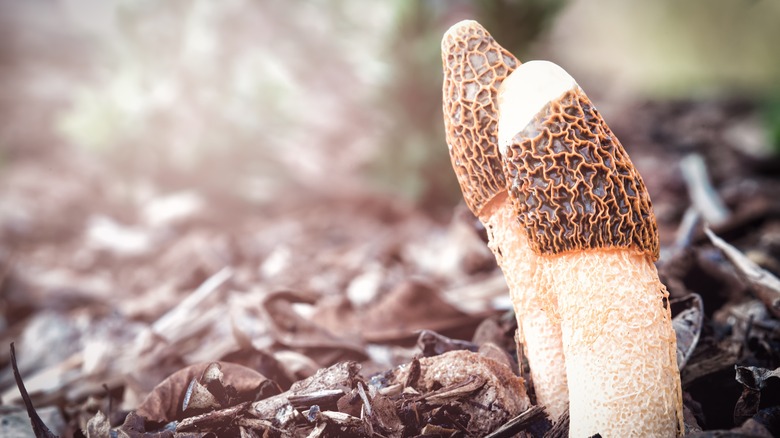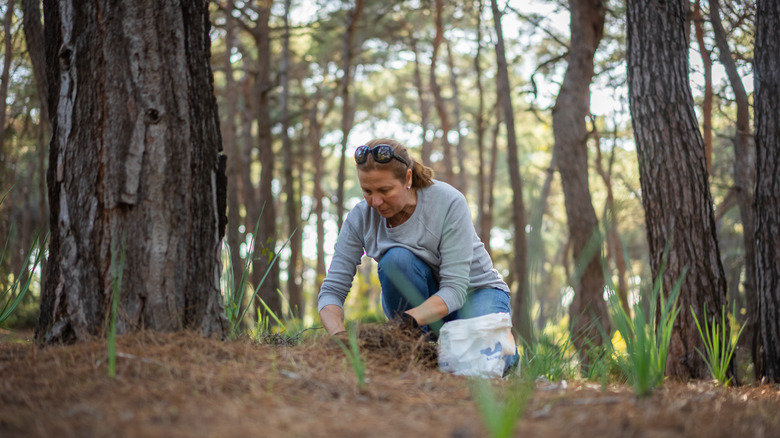This Mushroom Gives Off An Odor Of Rotting Flesh & That's Not The Worst Part
What if we told you there was a super stinky mushroom that could sprout in your yard and have you running from the smell? No, this isn't the plot of a horror movie. We're talking about the stinkhorn mushroom, a peculiar member of the Phallaceae family. Like a stinky teenager, it announces its presence with a stench that's hard to miss.
If you've never seen a stinkhorn mushroom before, they can be quite a shock. Their elongated, phallic shape and slimy, dark cap make them stand out from other garden mushrooms. The smell is another dead giveaway. If you catch a whiff of something that smells like rotting meat, chances are you have stinkhorns in your yard.
This odor isn't just for show, though. It's a clever evolutionary tactic designed to attract various insects, particularly flies, which help the mushroom spread. When these bugs come to investigate the source of the smell, they inadvertently pick up the mushroom's spores and carry them to new locations, allowing the stinkhorn to proliferate. That means if you've got these mushrooms growing, not only will you be dealing with the smell, but you'll also be dealing with the pests they attract.
Under what conditions does a stinkhorn grow?
You might be wondering why stinkhorn mushrooms have chosen your yard as their new home. The answer lies in the environment. The fungus grows in mulch, which is often used in well-maintained gardens. The more mulch and organic matter you have, the more likely you are to see these funky fungi pop up, especially after a good rain.
Rain plays a significant role in the life cycle of stinkhorn mushrooms. Moisture is essential for their growth, and a good downpour can trigger a bloom of these odorous fungi. After the rain, you might notice a sudden appearance of stinkhorn mushrooms seemingly overnight. They grow quickly, often reaching full size within a matter of hours.
The good news is that stinkhorn mushrooms are not dangerous to humans or pets, nor are they harmful to lawns. They might smell awful, but they won't cause any major issues if touched or ingested (though we don't recommend eating them). Some cultures even consider them a delicacy (during the young "egg" stage) — though their pungent odor makes them a hard sell for most people.
How do you get rid of stinkhorns?
Here's the thing -– stinkhorns need to be dealt with promptly. They're quick to start smelling, so as soon as you see them you'll need to destroy the fungus. But how do you do that?
The first step in combating these smelly invaders is removing them before they mature. The best way to get rid of stinkhorns is to dig them up while they're still in their egg form. Make sure to get the entire base to prevent them from coming back. Throw them in a sealed bag and dispose of them far, far away from your yard. Trust me, your nose will thank you.
Prevention is the next crucial step. Stinkhorns thrive in mulch and decaying organic matter. To keep them at bay, regularly turn your mulch and avoid over-watering your garden. Removing rotting wood and leaf litter can also make your yard less hospitable for these unwelcome guests. If you've followed all these steps and still find yourself in a fungal funk, don't despair. Persistence is key. Stinkhorns might be stubborn, but with time and effort, you can reclaim your yard (and your sense of smell).


